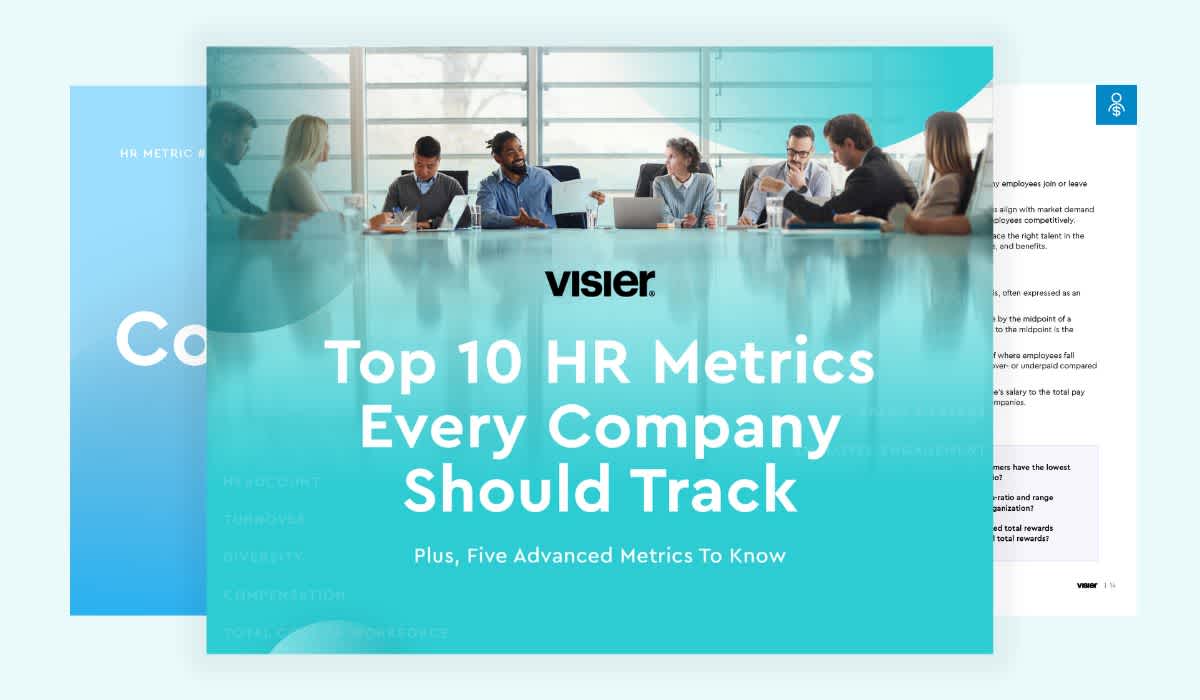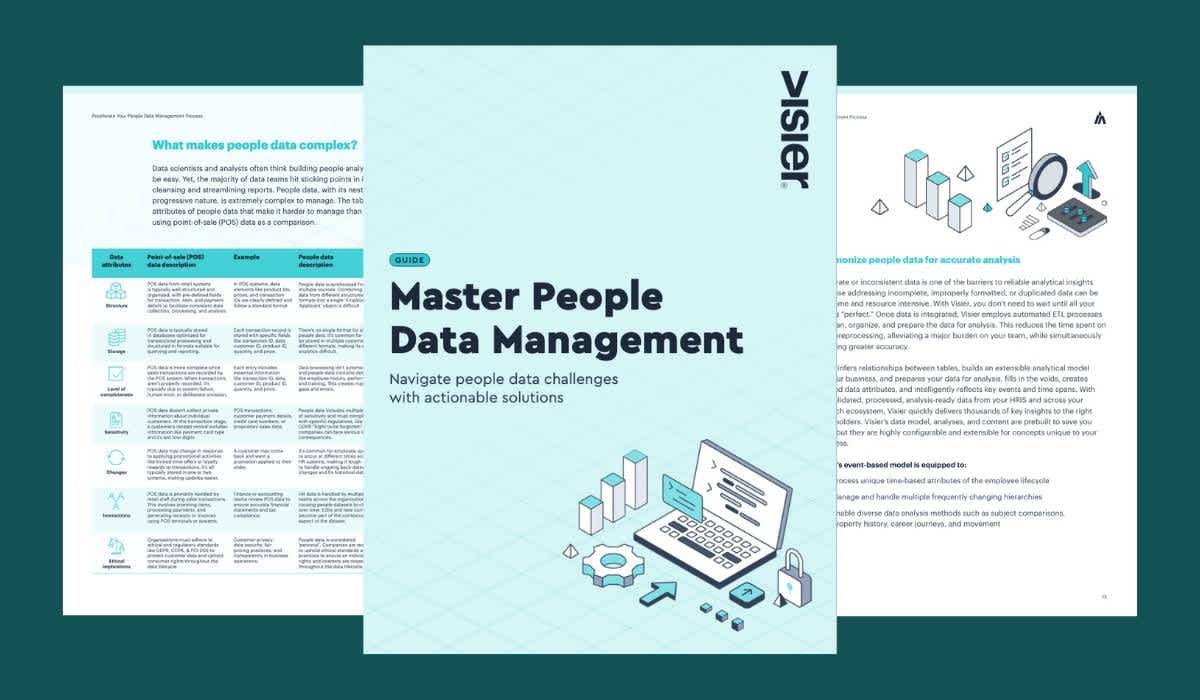The What Ifs of Work Planning
What if we tried a new approach to work planning? Explore the benefits of a new approach of people planning in the new workplace.

The job hunt today looks a little something like this: A recruiter, in collaboration with the hiring manager, revises an old job description for a position the company is looking to fill. The revisions add everything and anything the hiring manager could want—specific, often unnecessary, credentials, an inflated number of years of experience—essentially a laundry list of every skill the hiring manager could ever want the new job candidate to have.
Eventually, job candidates brave enough to apply throw their resumes into the (hiring) ring. An automated resume screening software then filters out most of the resumes, and only a small number of candidates move forward.
Moving forward generally means jumping through a number of hoops such as phone screens, virtual or face-to-face interviews, assessments, and background checks. One or two months and $4,000-$5,000 later (these costs include the sum of third-party agency fees, advertising agency fees, job fairs, talent acquisition system costs, etc.), the company may have finally hired a unicorn. And yet, according to the latest data from the U.S. Bureau of Labor Statistics, there are 10.7 million unfilled jobs in the U.S. Do we really have the luxury of time to hunt for unicorns?
What if we tried a different approach to work planning?
We could follow the good old hiring recipe, or we could take advantage of the challenges in the current work environment to reframe the fundamental assumptions and constructs of work planning.
What if the hiring search started with deconstructing the problem that needs to be solved or work that needs to get done?
What if the work can be orchestrated differently and “go” to workers, instead of workers going to the office (even for just two days a week)?
What if the work was given to those who don’t explicitly possess each skill because opportunity allows them to learn and grow? What problems might we solve by changing the status quo?
Many. Let’s explore them one at a time:
Reducing reliance on job descriptions could increase diversity, inclusion, and equity
Much has been written about men applying for a job when they meet only 60% of the qualifications, while women apply only if they meet 100% of them. Ridiculous job descriptions with an unrealistic list of requirements, and gender- or age-biased keywords (“go-getter”, “self-starter”, “dynamic”), lead to companies losing out on diverse candidates that may have been an excellent addition to their workforce.
Focusing on skills and strengths creates space for growth, innovation, and agility
Companies look at people in terms of how well their resume matches a “job description.” But, by focusing on skills and strengths, organizations can unleash the agility everyone is striving for. Such agility proved critical during the COVID-19 pandemic, and continues to prove necessary in an era of continuous acceleration and innovation.
For example, if people were confined to their “job,” furloughed Virgin Atlantic flight attendants would never have been deployed to UK hospitals to help with customer care during the pandemic. In this scenario, flight attendants were able to add value and utilize their transferable skills for the greater good of society.
Bringing the whole human into focus will create a differentiated workforce experience
Today, tenure, job history, and network are what lead to hiring and promoting. People are seen as a collection of previously performed jobs rather than unique, whole individuals who can make a slew of contributions outside of their traditional job description, leading to lack of satisfaction among the workforce.
First of all, a resume is a list of things one likely no longer wants to do—they’ve been there, and done that. Secondly, resumes rarely capture the richness of human abilities, value drivers, growth ambitions, and problem solving potential.
Viewing each individual as a unique portfolio of experiences, abilities, interests, and aspirations allows workers more agency in how they apply their skills at work.
Highlighting skills in a human-centered approach to workforce planning
Companies have been operating in a job-based model for over a century. It’s unlikely that a shift towards alternative ways of planning work will happen overnight. And yet, a number of companies are trying to evolve to skills-based and human centered models. It looks a little something like this:
Rather than having a rigid job-to-employee relationship, companies are beginning to foster a relationship between skills and individuals. The workforce is made up of distinct individuals that can leverage their vast skill set across a variety of work. Each individual in the workforce has the capacity for continued learning and growth, and chooses how to deploy their skills.
Rather than implementing a hierarchy organized by jobs, companies are creating a fluid way of work that cultivates an agile, meaningful place to work. As advocated for in Work without Jobs, one approach is to fractionalize the work, creating value-based chunks of work for mission-driven workers to tackle. Another approach could be to broaden the work, where workers commit to solving broader challenges by flexibly applying their skills.
Rather than making decisions about workers and organizing work based on the job, companies are organizing work based on attributes and skills of the workers. This means ensuring that the base construct of work is skills rather than jobs, and re-evaluating hiring practices, workforce planning, compensation, performance management, and even leadership. For example, today hiring involves opening up a job, AI screening of candidates, and then interviewing them. In a skills-based hiring scenario, the hiring manager would first need to describe the essence of the work that needs to get done, the skills needed to perform, and what type of worker makes most sense (e.g. a full-time worker vs. a freelancer). Then, workers would be matched to the work based on their skillset.
New forms of workforce planning in practice
While still early days of the global evolution of the workforce, there are a few pioneer companies that are starting to implement alternative practices:
Unilever. Anish Singh, head of HR for Australia and New Zealand stated: “We’re beginning to think about each role at Unilever as a collection of skills, rather than simply a job title.” In fact, Unilever has implemented an internal talent marketplace that allows individuals to display their skills, and fluidly move across projects to utilize their multifaceted skill sets. Workers can be full-time with Unilever, or contracted workers to be on this talent marketplace.
Brightfield. Digital transformation is key to the newly evolving vision of the workforce, and Brightfield helps with just that. They are building the world’s most trusted extended workforce guided buying platform. They ingest data about the work, suppliers, contracts, and people, analyze the data, and then translate insights into recommendations for optimal contract labor decisions.
A.Team. A member’s only network that empowers the world’s top tech builders to team up and build things that matter. Companies create teams with A.Team to either help them build something from scratch, or supercharge the teams they already have today.
Changes to workforce planning are already here
For most, the idea of a formal “job” no longer being the building block of the workforce is almost unimaginable—but the skills-based transition is happening, and is likely here to stay. The acceleration of innovation, and the speed at which the world moves today requires companies to re-examine what their workforce might look like, and brace themselves for change. The rethink of our workforce operating model isn’t just coming—it’s here.
And while we are at it, perhaps we can reframe the notion of “job hunt” or “head hunting” into something more humanizing too…


